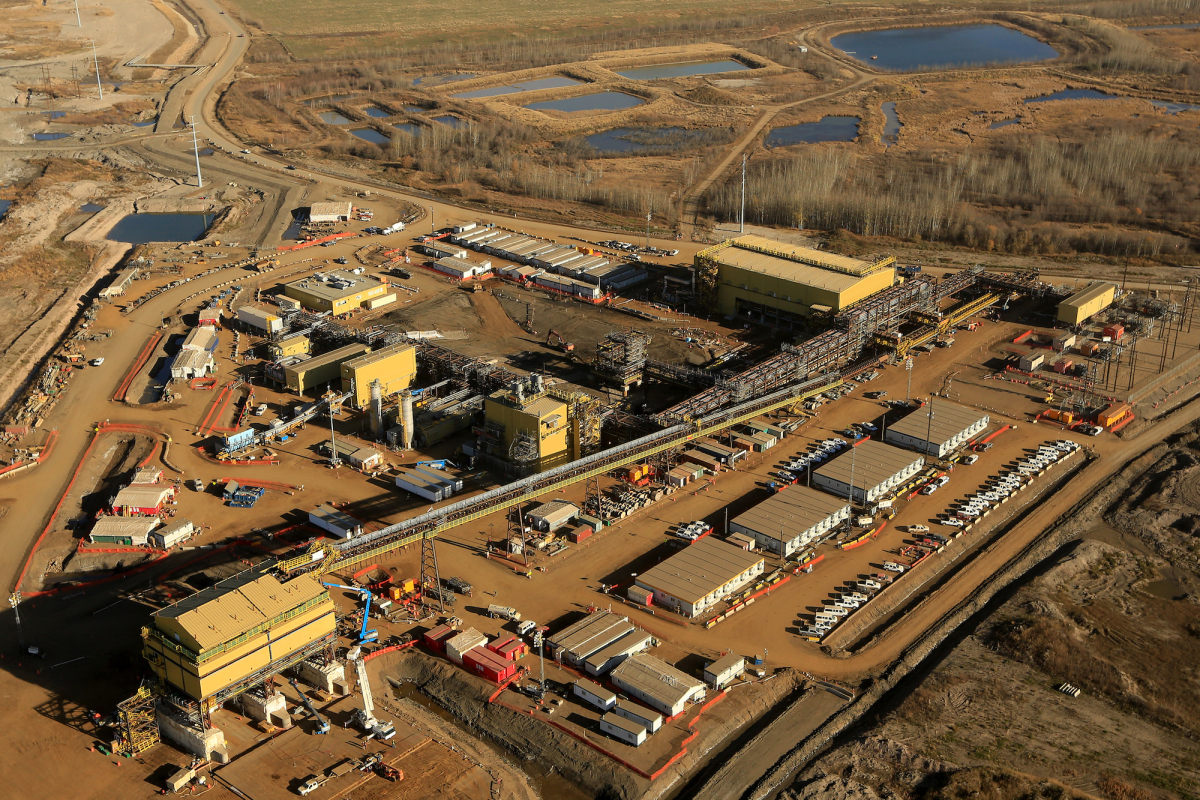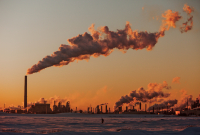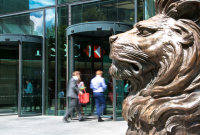Norway’s municipal employees pension fund, the country’s largest, has sold its last remaining stakes in companies with operations in Canada’s oilsands, saying holding them does not align with efforts to keep global heating below internationally agreed-upon targets.
The fund, Kommunal Landspensjonskasse (KLP), last year dumped stocks that drew more than 30 per cent of their revenue from oilsands operations, but on Monday said they can no longer tolerate even those that have five per cent exposure.
KLP, which manages the pensions of Norway’s 900,000 nurses, firefighters and other employees of local governments and state-owned enterprises, said in a statement that it had jettisoned US$33 million worth of equity holdings and US$25 million in bonds from Canada’s Cenovus Energy, Suncor Energy, Imperial Oil (majority owned by ExxonMobil) and Husky Energy, as well as Russia’s Tatneft PAO.
Jeanett Bergan, head of responsible investments at KLP, said in a phone interview that “the message we really would like to get across is that companies and fund managers and investors all need to start managing this risk and making sure that they’re doing everything they can to be part of the transition that all societies need to do.”
Norway, much like Canada, has a sizable oil and gas industry that creates economic activity but also contributes to unsustainable levels of global carbon emissions. The oil and gas sector in Canada is the largest contributor to the country's carbon pollution profile, contributing over a quarter of all emissions, or 27 per cent according to federal estimates.
“From the emission numbers and everything that is happening around the world, nothing is moving fast enough,” Bergan said. “We're not close to the 1.5 degree (Celsius) target, we're not close to the 2 degree target. We're far from it,” she said, referring to commitments made as part of the Paris Agreement, signed in 2016, to keep global warming from rising more than 1.5 or 2 C above pre-industrial levels.

Canada Pension Plan board looking at fund’s pollution
Global temperatures have so far risen roughly 1 C since humans began building factories and using mechanized manufacturing techniques more than 200 years ago. Human activity, such as the burning of fossil fuels has caused all planetary heating since midcentury.
The Canada Pension Plan Investment Board (CPPIB), a Crown corporation, manages over $400 billion including hundreds of millions of dollars worth of oil and gas companies such as Enbridge ($385 million), Suncor ($240 million) and Pembina Pipeline ($95 million).
The corporation could not say whether it was considering axing its fossil fuel holdings when contacted by National Observer. It also does not have a stated, specific plan to cut exposure to companies of a certain emissions intensity.
In fact, the fund has just started to ask the question of how much carbon pollution its holdings emit at all.
CPPIB’s 2018 sustainability report looked at 34 per cent of total holdings, the fund’s stake in each emitting company, and determined it emitted 15.6 million tonnes of carbon dioxide equivalent (125 tonnes of CO2e per C$1 million invested and 220 tonnes of CO2e per C$1 million of revenue).
The fund says it has created tools to allow its investment teams to assess climate change risks and opportunities and also published details on the carbon footprint of its public equities portfolio for the first time in that 2018 report.
Oilsands ‘have been a poor investment for years’
Much of Norway’s fossil-fuel wealth is now being directed toward more sustainable activities, with the country’s trillion-dollar sovereign wealth fund in March announcing it would exit all oil and gas stocks, holdings estimated at $38 billion.
KLP exited all stocks deriving more than 50 per cent of their revenue from coal five years ago, tightening that to 30 per cent in 2017 and five per cent this year.
Last year, it used the 30 per cent cutoff to exit major oilsands companies including Canadian Natural Resources, MEG Energy Corp. and Athabasca Oil Corporation.
CEO Sverre Thornes said KLP wanted to send a signal to markets that oilsands, which have high production costs and emissions intensity, should not contribute to future global energy supply.
“We hope that other large asset managers will follow this example,” he said.
KLP manages more than US$8 billion in total, of which 2 per cent is invested in fossil fuel and 5 per cent is in renewable energy.
“Canada’s high-cost oilsands have been a poor investment for years,” said Tom Sanzillo, director of finance for the Institute for Energy Economics and Financial Analysis (IEEFA).
“The global market is oversupplied and likely to stay that way,” he added. “The high production costs will make them uncompetitive in an increasingly competitive global market.”
Green Party wants to regulate CPP board
The Green Party of Canada has made extracting the country’s primary public pension fund from the business of backing fossil-fuel extraction part of its platform for the Oct. 21 election.
The platform commits to "regulate the CPP Investment Board to require divestment of coal, oil and gas shares and ensure that all investments are ethical and promote environmental sustainability."
Canadian bankers are meanwhile pushing for the oilsands and the rest of Canada’s oil and gas industry to be considered a sustainable and green investment, Bloomberg reported earlier this month.
KLP, meanwhile, is putting some of the money it’s pulled out of fossil fuel companies into the types of companies it expects would take their place in the low-carbon economy of the future.
The pension fund has committed to invest six billion Norwegian kroner (US$660 million) a year into renewable energy and other green projects, and last week launched four new fossil fuel-free funds with 2.8 billion Norwegian kroner (US$307 million) of their assets.
“We decided as a principle that these products are not going to be more expensive,” Bergan said. “They will be at the exact same price as the non-eco-labelled products, even though they do demand a little bit more work from us, we have to buy some more data, there is more work involved in managing them ... and that’s because we want to be that driving force.”
She said that KLP expects the fossil fuel-free funds to produce similar returns to its overall investments, and noted that a one billion kroner (US$110 million) fund that’s been operating since June 2018 is so far outperforming the market.
The fund - KLP’s fossil-fuel free, eco-labelled global index equity fund has had a 22.8 percent return so far this year, 1.5 per cent ahead of its benchmark.






Comments
"Canadian bankers are meanwhile pushing for the oilsands and the rest of Canada’s oil and gas industry to be considered a sustainable and green investment, Bloomberg reported earlier this month." — surely they jest???
KLP is part of the Norwegian economy which is heavily involved in oil and gas exploration and development. What kind of investments policy KLP have in Norway?
From CBC News, October 07, 2019:" Two days before KLP's announcement, Norwegian energy giant Equinor (formerly Statoil and Statoil Hydro) began operations of a massive new offshore oil project in the North Sea. The Johan Sverdrup field mega-project is expected to produce oil for the next five decades, which is beyond the time when experts say the world's GHG emissions should be net-zero to avoid warming of more than 1.5º C."
Equinor, one of the largest oil and gas company in the world, has operations in thirty-six countries. As of 2017, the Government of Norway was the largest shareholder with 67% of the shares, while the rest is public stock
(KLP?).
Statoil (now Equinor) is also involved in a major oil exploration in the Arctic. In 2014, a Norwegian rig discovered Russia's biggest arctic oil fields, which later got the name "Pobeda" (Victory). Rosneft (the Russian major partner) leader Igor Sechin compared the resource potential of the Kara Sea with the one of Saudi Arabia. ExxonMobil was also a partner but pulled out of the project following U.S. sanctions. But Eni (Italian) and Statoil have no plans to abandon their cooperation with Rosneft.
The Kara Sea, a remote Arctic area located 74º North is covered by ice during major parts of the year.
The Conservative steal of the Alberta Government brings us back to an unsafe climate for investors. Witness the new private (secret) Energy board.